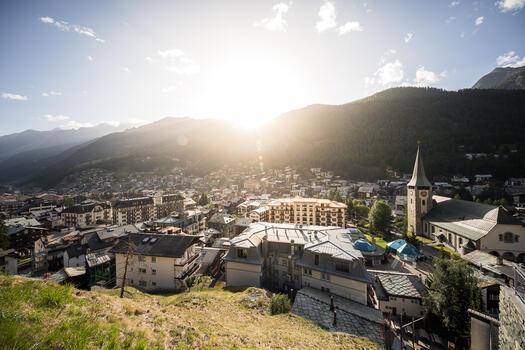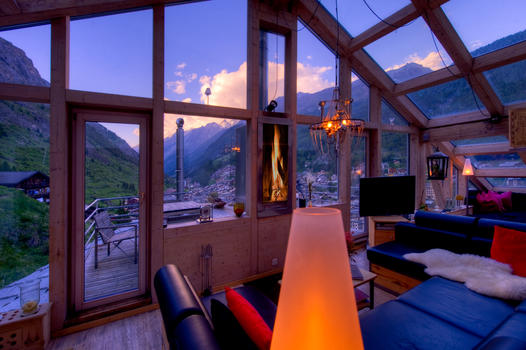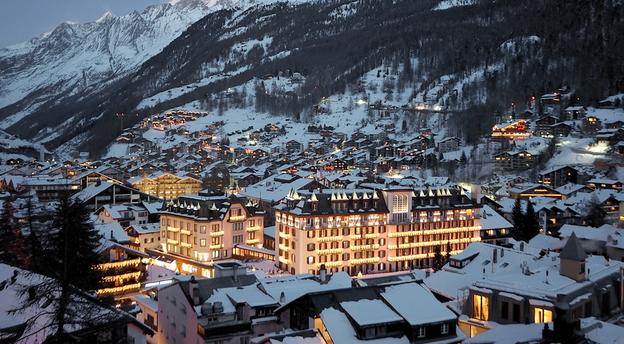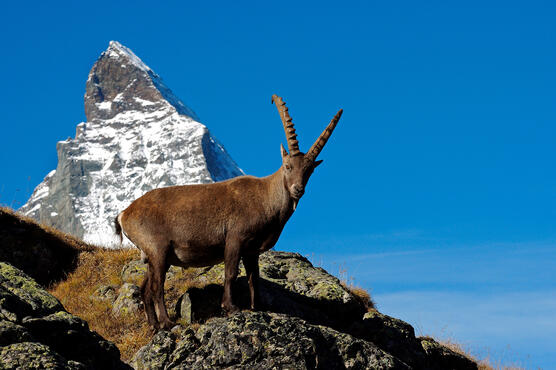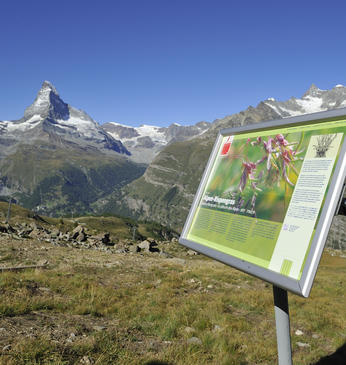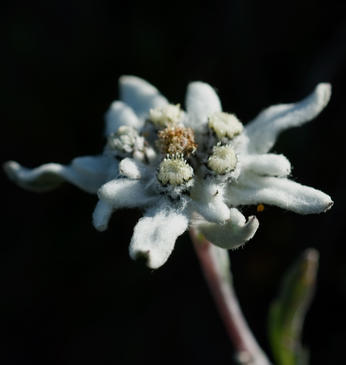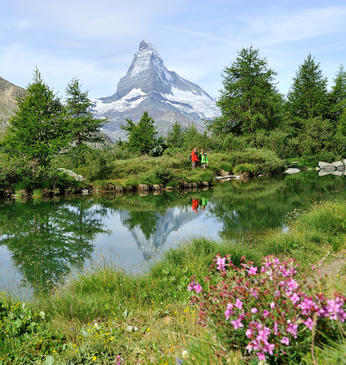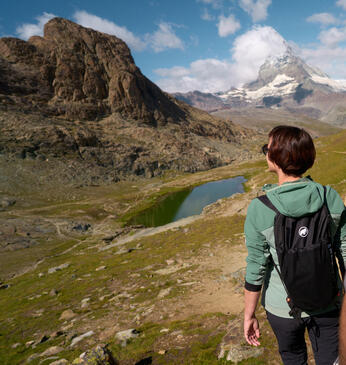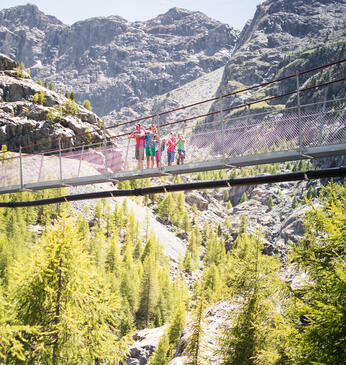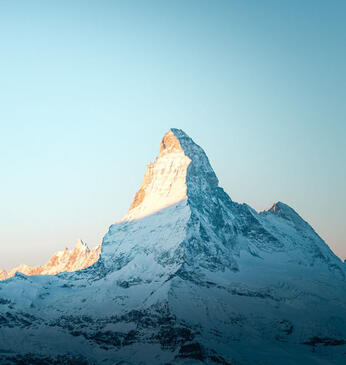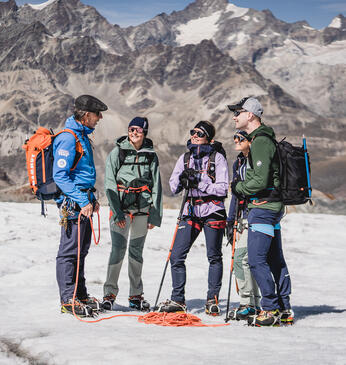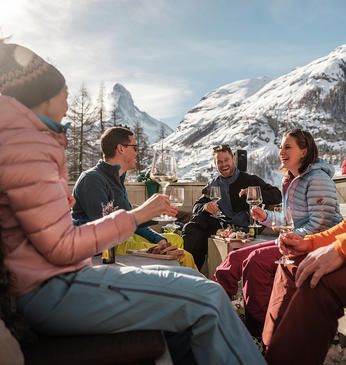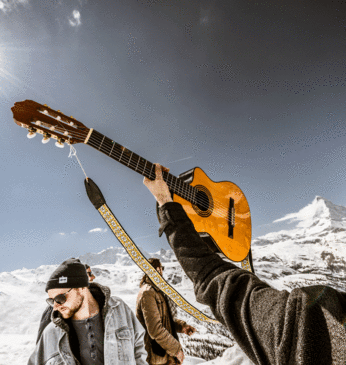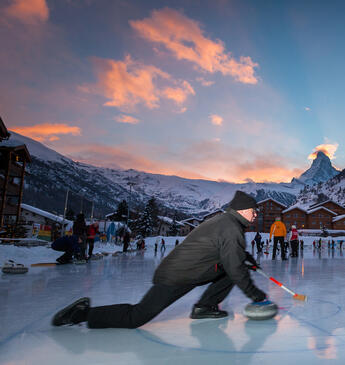Those who take the Matterhorn Express from Furi to Schwarzsee are in for a surprise in winter. Depending on the snow and weather conditions, up to 50 chamois can be spotted from the cable cars on the slopes of the Schafberg. But as soon as there is danger of an avalanche the animals vanish as if by magic: ‘‘Chamois can adapt themselves very well to their alpine environment“, says game warden Bruno Tscherrig. The chamois leave the slopes before avalanches start to roll. But as soon as the danger is past, they come back to the snow-free parts of the avalanche area and feed on the withered autumn grass.
Ibex are also not hard to find in the Zermatt mountains. ‘‘We have the animals practically outside our front door“, says the warden. On the Gornergrat for example, where a salt stone attracts them in summer. They stand there, still and majestic, and survey the mountain world around them.
One may be lucky enough to catch a glimpse of a golden eagle or even a bearded vulture. And by observing carefully the prints one can recognise the tracks of white hares or foxes. Feathered species are also well represented: golden eagles, snow grouse, rock partridges (very seldom) and birds of all kinds.
But you don’t even have to leave the village to see wild animals, you just have to stay awake at night. There are badgers in Zermatt that scurry around the church during sleeping hours. Families of martens help themselves out of the rubbish containers. And dozens of foxes are drawn to the village every night, as the locals feed their cats in the open air. But beware: feeding is forbidden, and human contact is to be avoided.
The curious ones: the chamois
Recently a chamois looked into the office of the operation controllers at the heliport. And an old chamois was sighted regularly below the Hotel The Omnia. Many locals have stories to tell – for chamois are very curious.
Both sexes of chamois have hooked horns about 25 cm long. They live in packs, especially in the winter time. Powerful rams, weighing up to about 35 kilos, indulge in fights during the rutting season from November to December. During this time the antagonists pursue each other in wild chases. The gestation period is a good five months, and the kid – usually just one – generally is born between mid-May and mid-June.
The majestic ones: the ibex
Male ibex can weigh up to 80 kg, females however only up to 35 kg. The mating season is in December and January, and the gestation period is six months. A single young ibex is born in June. Both sexes carry horns, rams up to about 100 cm, the female to about 30 cm. The rams grow up to two knots per year in their horns. Ibex live at altitudes of between 1600 and 3000 metres, so the area around Zermatt is ideal for this majestic alpine inhabitant.
The loud ones: the red deer
A male red deer can weigh up to 200 kg, the female up to 100. The mating season is mid-September to mid-October. Does gestate for 34 weeks, and the young, mostly just one, are born in May or June. The deer also have an antler cycle, with the antler growing from February to July and shedding in February/March. The kids have a red coat with white spots, and thus can easily be confused with fawns. In the rutting season the male deer bell loud and long. They are clearly audible at daybreak, especially between Täsch and Randa, during the rutting season.
The invisible ones: the roe deer
There’s a large roe deer population in Zermatt. Males can weigh up to around 23 kg, females 20. Their summer hair is reddish brown, the winter hair grey-brown. The rutting and mating season is in July and August. The gestation period is 42 weeks, and the young are born between May and June, mostly as twins. Only the males have antlers. These grow from December to April, and are shed every year between October and December.
The cute ones: the marmots
Zermatt has many colonies of marmots. The animals lie in extensive lairs and weigh between three and six kilos. Their mating season is in April and May, and the gestation period is only 33 days. A litter contains two to three animals. Marmots have a distinctive social character, so that they can be observed easily by hikers and walkers – especially in June, when the young are already raised and no longer immediately obey their parents.
Best observation places and times
(see map)
Chamois: Winter: Matterhorn glacier paradise: Schafberg, from the cable car of the Matterhorn Express, after Furi to Aroleid. Rothorn: from the cable car, between Blauherd and Rothorn peak. On the piste, below the traverse before Blauherd. Gornergrat: from the Gornergratbahn, between Findelbach and Riffelalp (rather seldom). Summer: throughout the area, especially in the Schweifine area.
Ibex: Winter: Täschalp (January), only accessible on skis. Summer: Gornergrat Kulm, at the salt stone, also visible from the restaurant terrace. Hiking trail Rotenboden in the direction of the Monte Rosa Hut, above the lateral moraine of the Gorner glacier. Riffelhorn. Chalbermatten bei Zmutt.
Red deer: Winter: in the woods. Summer: Randa to Herbriggen, partly visible from the Matterhorn Gotthardbahn, along the Vispa, downstream direction, mainly on the left.
Roe deer: Winter: in the woods. Summer: Wooded areas Aroleid, Findeln, Täsch woods etc. In Zermatt one can hear the deer belling in July and August during the rutting season.
Marmots: Winter: they are in hibernation. Summer: On the Murmeltierweg (marmot trail) at Sunnegga/Blauherd, on the hiking trail Täsch-Zermatt, between Furi and Aroleid. Patient observers can spot them almost everywhere.
Golden eagles: Trift/Mettelhorn.
Important wildlife protection
In Zermatt many areas are designated as wildlife protection areas. ‘‘Snow sports fans often overlook the signs and stray off the pistes and into the wildlife sanctuaries. In most cases this spells death for chamois and deer“, says game warden Bruno Tscherrig. Because in winter the body metabolism of the chamois, deer and company functions at a minimum. So for example if a frightened chamois is forced to flee it will often die of exhaustion. If it’s a doe, its young will die too because they depend on their mother to lead them.
All guests seeking pleasure or relaxation in the open air are asked to observe the instructions on the numerous signs, and not to leave the pistes and hiking trails. Snow sports fans who indulge in a wild woodland descent cutting straight through a protected area risk a very big fine and forfeiting their ski pass.
But the pleasure in observing the shy wildlife can be great. Those who observe the animals with time, patience, binoculars and warm clothing are rewarded with an unforgettable experience.
